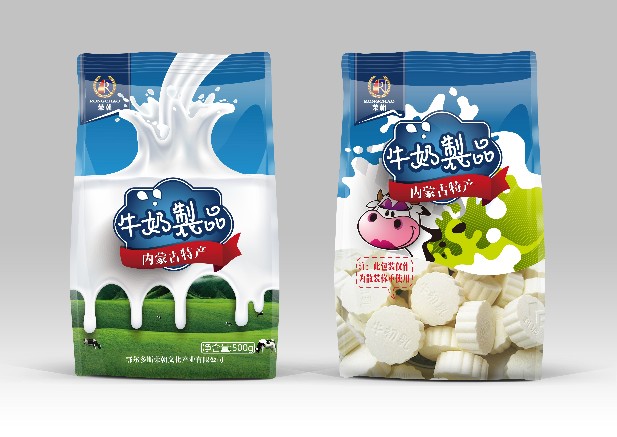Source: Link Testing Instruemnts Co.,Ltd

Why does the milk powder packaging have the phenomenon of deflated bags?
Quality issues:
After a period of storage of the air-packed milk powder, the bag was deflated, but no leakage was seen with the naked eye.
Cause Analysis:
(1) Packaging materials
• Poor barrier property - the gas inside the package has a high amount of gas permeating through the packaging material, that is, the gas permeation amount is large and the barrier property is poor, such as carbon dioxide and nitrogen inside.
• Poor rubbing resistance - After being rubbed by external force, defects such as creases and pinholes appear in the packaging bag, resulting in poor barrier properties.
(2) Finished product packaging and processing
• Poor sealing - the bag body or heat-sealing part of the flexible plastic package is prone to air leakage under certain pressure or long-term storage, especially the sealing quality of the heat-sealing part is poor, such as the heat-sealing strength is too low or too high If the heat sealing strength is not uniform, air leakage is more likely to occur.
Expert advice:
——Pay attention to the barrier properties such as nitrogen transmission rate and carbon dioxide transmission rate of packaging, nitrogen transmission rate after rubbing, carbon dioxide transmission rate after rubbing, etc. The daily monitoring of barrier performance, sealing performance (negative pressure method), heat sealing strength and other properties after rubbing .
——Adjust the parameters of the heat sealing machine to improve the quality of the heat sealing part; choose a packaging material with high barrier properties and good rubbing resistance or improve the quality of the existing packaging material.
Typical quality cases:
——Test sample: aluminum-plastic composite film for milk powder packaging (customer feedback that the milk powder is packaged with nitrogen, and the phenomenon of packaging shriveled bags becomes more and more obvious with the increase of storage time).
——Targeted testing items: nitrogen transmission amount, nitrogen transmission amount after rubbing, sealing performance (negative pressure method), heat sealing strength.
——Test results: The nitrogen transmission amount before and after the rubbing of the aluminum-plastic composite film is not much different, and the test values are all low (that is, the barrier to nitrogen is better), indicating the barrier and rubbing resistance of the composite film. The uniformity of the heat sealing strength value is poor, the heat sealing strength is only 18N/15mm at the poor heat sealing place, and the heat sealing strength can reach 45N/15mm at the good heat sealing place; at the same time, in the sealing performance (negative pressure method) test, when the finished milk powder was packaged at -65KPa, the heat seal leaked, which was lower than the average pressure of similar high-quality products -90KPa, which further proved that the heat sealing effect of the heat seal was poor. Therefore, the occurrence of the deflated bag problem is mainly related to the heat sealing quality of the heat sealing.
What should we do if the liquid milk packaging leaks or breaks the bag?
Quality issues:
The bagged liquid milk has problems such as liquid leakage and bag breakage during production, transportation and sales.
Cause Analysis:
(1) Packaging materials
• Poor toughness - the packaging material has high brittleness and poor toughness. When the finished package falls or is impacted by external force, it is easy to break the bag at the bag body.
• Poor thermal viscosity - when the heat seal has just been sealed and has not cooled down, the impact force generated by the liquid milk being filled can easily cause the heat sealing part to rupture immediately, which means the packaging material has poor thermal adhesive strength.
(2) Finished product packaging and processing
• Poor heat sealing strength - The sealing quality of the heat seal is poor, and under the impact of liquid milk or squeezed by external force, liquid leakage and bag breakage may easily occur at the seal.
Expert advice:
——Pay attention to the monitoring of various performance indicators such as burst pressure, drop resistance, pressure resistance, heat-sealing strength, hot-adhesive strength, tensile strength and elongation at break, and resistance to pendulum impact.
——Improve the parameters of the heat sealing machine, and choose packaging materials with good flexibility and heat sealing performance.
Typical quality cases:
——Test sample: liquid milk milk white film packaging bag (customers reported that the liquid milk packaged in the milk white film has a high proportion of broken bags and liquid leakage during the shelf life).
——Targeted testing items: burst pressure, drop resistance, pressure resistance, heat sealing strength, tensile strength and elongation at break, and impact resistance to pendulum.
——Test results: The tensile strength, elongation at break and impact energy of the pendulum impact resistance of the milky white film of the problem sample can meet the quality requirements of the product, that is, the flexibility of the milky white film is good; in the burst pressure test, at 30KPa, the liquid The milk package was broken during the heat seal. In the drop resistance test and pressure resistance test, the finished package was broken during the heat seal, and the heat seal strength of the package was low, only reaching about 14N/15mm, which is much lower than Market average for similar quality product packaging. The above test phenomenon shows that the broken bag and liquid leakage of the problem sample are mainly caused by the poor heat sealing strength of the heat seal.
For more details please visit www.linktesting.org